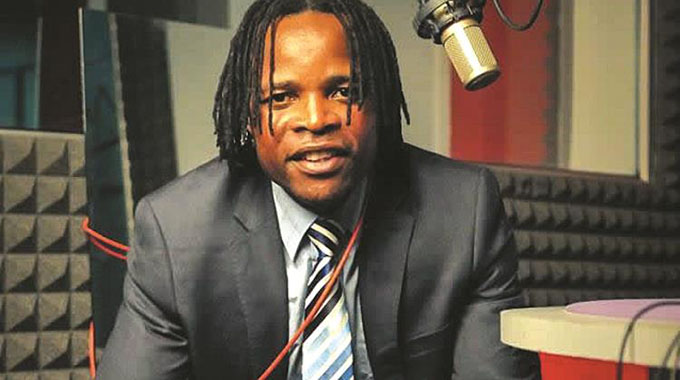Freedom fighter’s spirit helps solve war mystery

Isdore Guvamombe
“It was in the morning at Chimoio Camp, I was going to the main office to surrender school reports, as required of me as a teacher. Suddenly I saw enemy planes arrive and I had no time to run. In fact, there was nowhere to run. It was in the open and there were a few dotted trees, but a bit far from where I was. I was shot from the plane and my stomach was ripped open. My intestines came out.
“The whole camp was under fire, but I crawled to a tree and lay beneath it. For hours my intestines were dangling out and each time I tried to push them back, they came out quickly.
“I was thirsty, hungry and powerless. I wished to be helped but there was no one to help me. I stayed there three days hoping to get help but got none until I died.
“I was never buried together with others in the mass graves. My remains, remained under that tree and my flesh was eaten by wild animals. No one saw my remains so I had to manifest through my cousin Evester back home in Murehwa more than 40 years after independence, so that I get a decent burial,’’ said Cde Tichatonga Zimbabwe Mambo.
“I am happy, I was finally buried besides my siblings at a family graveyard in Chief Mangwende’s area in Murehwa. I am more than grateful to my surviving freedom fighters for according me a decent burial through the Fallen Heroes Trust,’’ he added.
It sounds more of unorthodox journalism to interview a spirit, but when you are on the ringside of events, where the profession at times awkwardly catapults you, you might have no choice.
After all, a voice is a voice and can give you an important story that brings closure and finality to a mystery.
By the way, the gem you are about to read is not a script for a horror movie, but a real story that put closure and finality to a death that occurred in Mozambique in 1977 at the height of the liberation struggle.
Born Benjamin Mapfuya in Murehwa in 1959, he left school and joined the struggle at the age of 17 and ended up in Chimoio.
There, he adopted the Chimurenga name Mambo Tichatonga Zimbabwe.
It was only recently that his remains were collected from under the tree at Chimoio and reburied in Murehwa.
To get buried, Cde Mambo had to manifest through his female cousin Evester Kuvawoga, giving pin point information about his death, where his remains were and how to go about his reburial and which living freedom fighters would help her.
True to that, a possessed Kuvawoga found herself at the Fallen Heroes Trust and led them to the exhumation of his remains and subsequent reburial in Murehwa.
“Evester came to my house in Mutare possessed and in a trance and we spent some days working on the logistics and Cde Mambo’s spirit led us to every Government office until all the paperwork was done.
“At Chimoio, the spirit led us to where the remains lay. It is so amazing but we had to follow the spirit’s instructions and we eventually recently reburied him, like he says,’’ said ex-freedom fighter Cde Evelyn Makwambeni, who is also the national coordinator of the Fallen Heroes Trust of Zimbabwe.
“Everything the spirit said was true. It gave pin point information about the place the remains lay up to burial,’’ he added.
However, Cde Mambo is bitter that his cousin Evester is a trained teacher who has failed to get a job and push ahead his legacy.
On November 23, 1977, the Rhodesia racist regime of Ian Douglas Smith attacked the Zanla military headquarters in Mozambique called Chimoio in a big air force operation they codenamed “Dingo”.
Zanla revenged some months later by attacking Grand Reef Airbase outside Mutare, bombing the city of Mutare itself and hitting fire forces in the Mutoko area.
The Zanla Chimoio Camp, which was the liberation army’s military headquarters in Mozambique, was a massive military complex.
It was situated about 20 kilometres to the north-east of the town of Chimoio, the capital city of the Mozambican Province of Manica.
The Zanla Chimoio camp was a conglomeration of camps.
There was a sub-camp called “Osibisa”, which was mainly a women’s camp; “Chaminuka”, which was the main Zanla security camp; “Chindunduma” was for young schoolchildren; “Percy Ntini”, which was a convalescence centre and a logistics base; and the “Garage” Camp where Zanla vehicles were serviced and repaired.
There was Takawira Base Two Camp about seven kilometres to the north-east of the main camp which was the main military training camp for males in Mozambique.
That camp had previously been located at the main Chimoio Camp described above under the name Takawira Base One Camp or Mapinduzi (revolution) before it was moved to its new site.
No wonder the Rhodesians decided to attack that camp on November 23, 1977.
And they did that in a very big way by sending their entire air force to attack the Zanla camp.
By the way, the Rhodesian air force that time was the biggest in sub-Saharan Africa outside South Africa.
To appreciate how big the Rhodesian Air Force arsenal was at Chimoio, let us look at some figures.
There were 40 helicopters that were used solely to carry members of the Rhodesian Light Infantry to the target, a further 10 armed helicopters with 20mm cannons which were used in the actual fighting itself, 10 Hunter fighter bombers, six Vampire fighter bombers, four Canberra bombers, Dakotas and other aircraft.
It should be noted that the Rhodesian attack was a surprise attack.
The reasons why the attack turned out to be so were two-fold.
The first was that for some strange reason, there was this wrong belief that while everyone accepted that the Rhodesian racists were pure bastards, however, when it came to international boundaries they were expected to respect them.
What this meant was that Zanla expected Rhodesians to respect Mozambique’s territorial integrity.
The second reason arising from the first was that because Zanla believed Rhodesians would not invade Mozambique, using their entire air force, the racists’ deception plan on the very first day of the attack itself worked to perfection.
“A Douglas DC-8 airliner was flown over the Chimoio camps 10 minutes before the airstrike as part of a deception plan in which the freedom fighters were dispersed in a false air raid alert, so that when the aircraft participating in the actual airstrike approached, they did not cause alarm, when the first air force jets arrived, the assembled Zanla forces as planned, did not take cover again as they assumed it was the DC-8 belonging to the Mozambican governor gavhenadhori’s plane.
And so disaster struck!
First to strike were the Canberra bombers, Hunters and Vampire jets. Then when those freedom fighters who had survived were running for their lives, “helicopter gunships engaged opportunistic targets . . . that together inflicted the majority of the casualties . . . The paratroopers and heliborne troops were deployed on three sides of the (camp) into various stop groups and sweep lines and were also effective in killing large numbers . . . ”
The Rhodesians also bombed children at Chindunduma as well as civilians who resided in the camp.
It was simply indiscriminate bombing of devilish proportions.










Comments